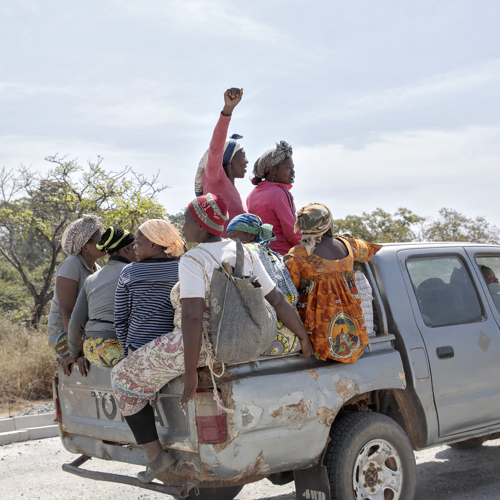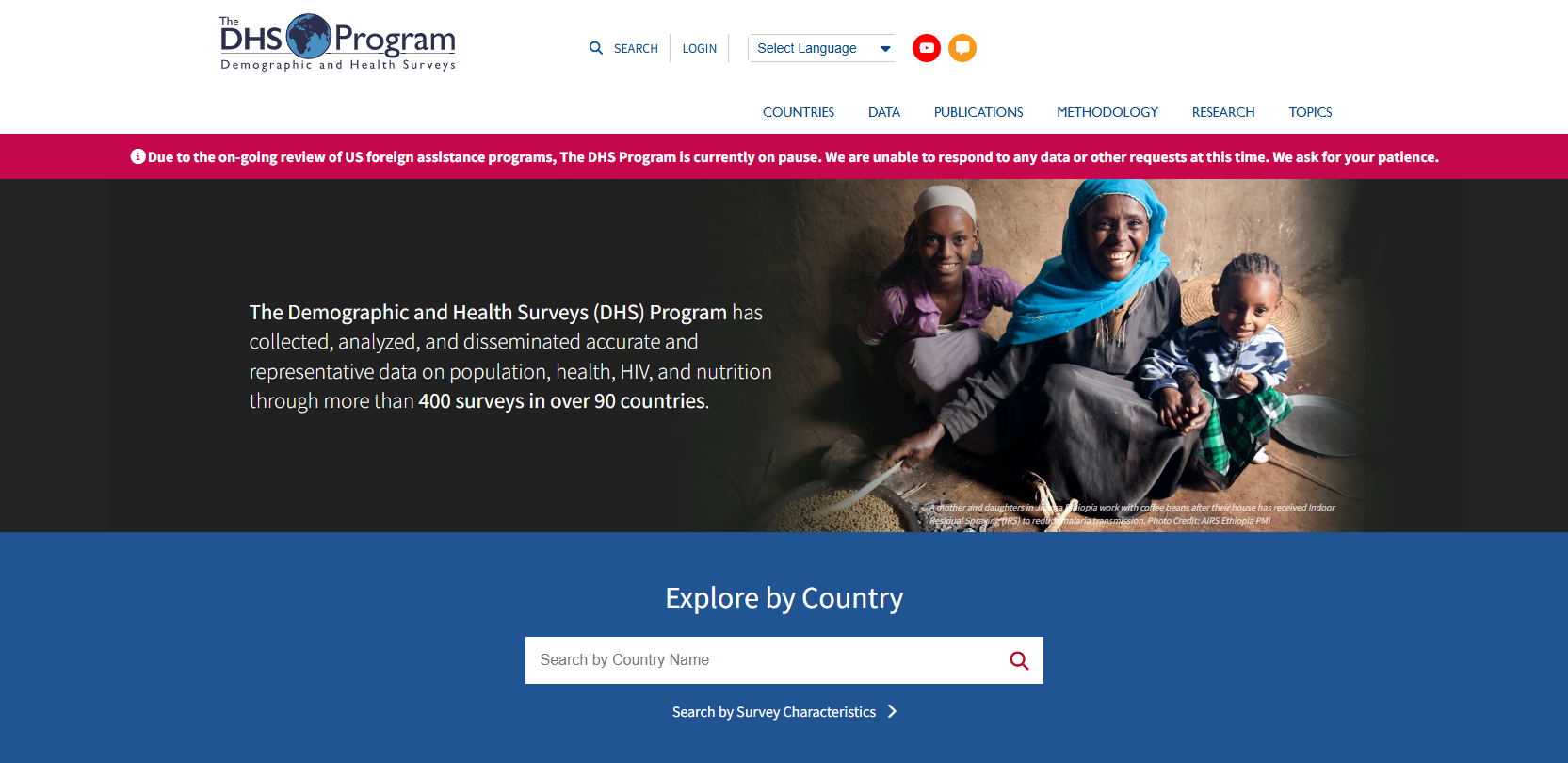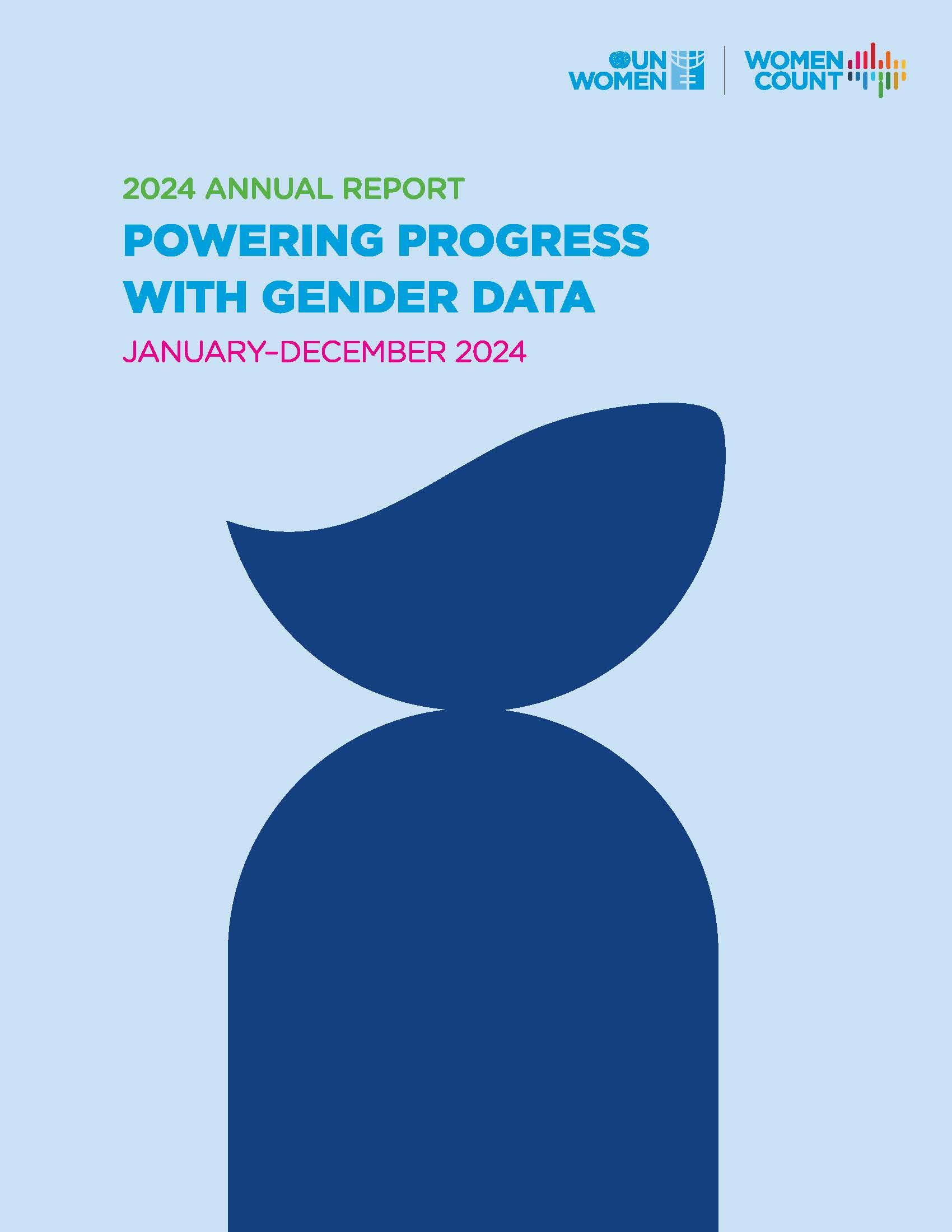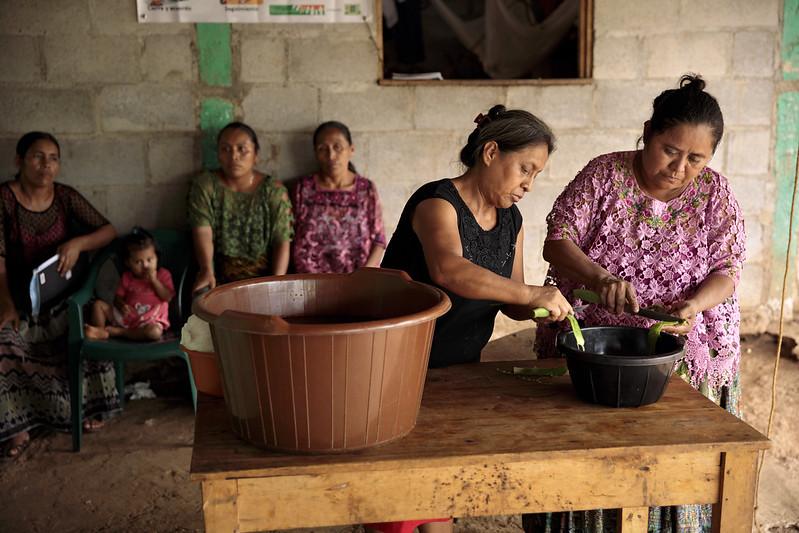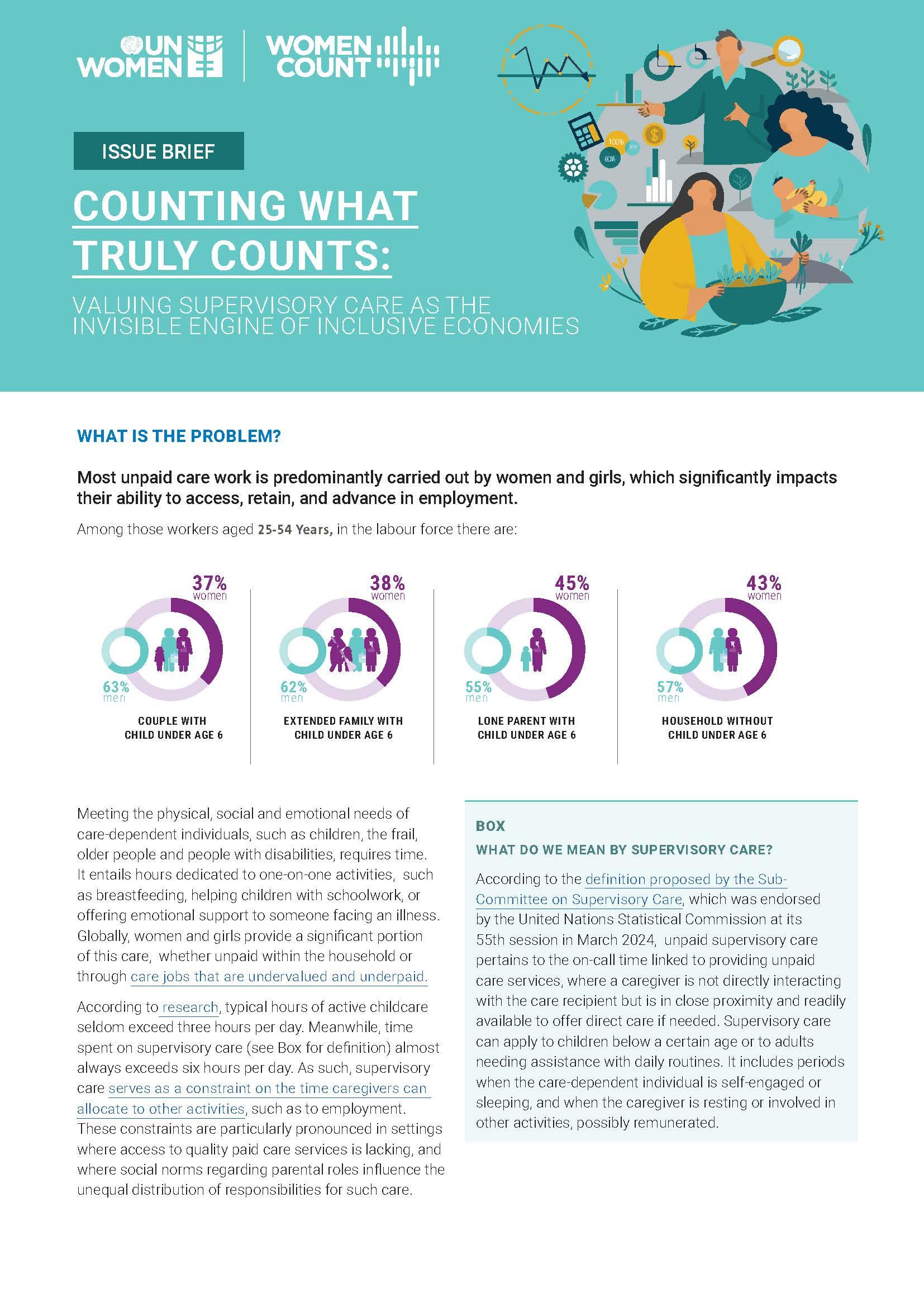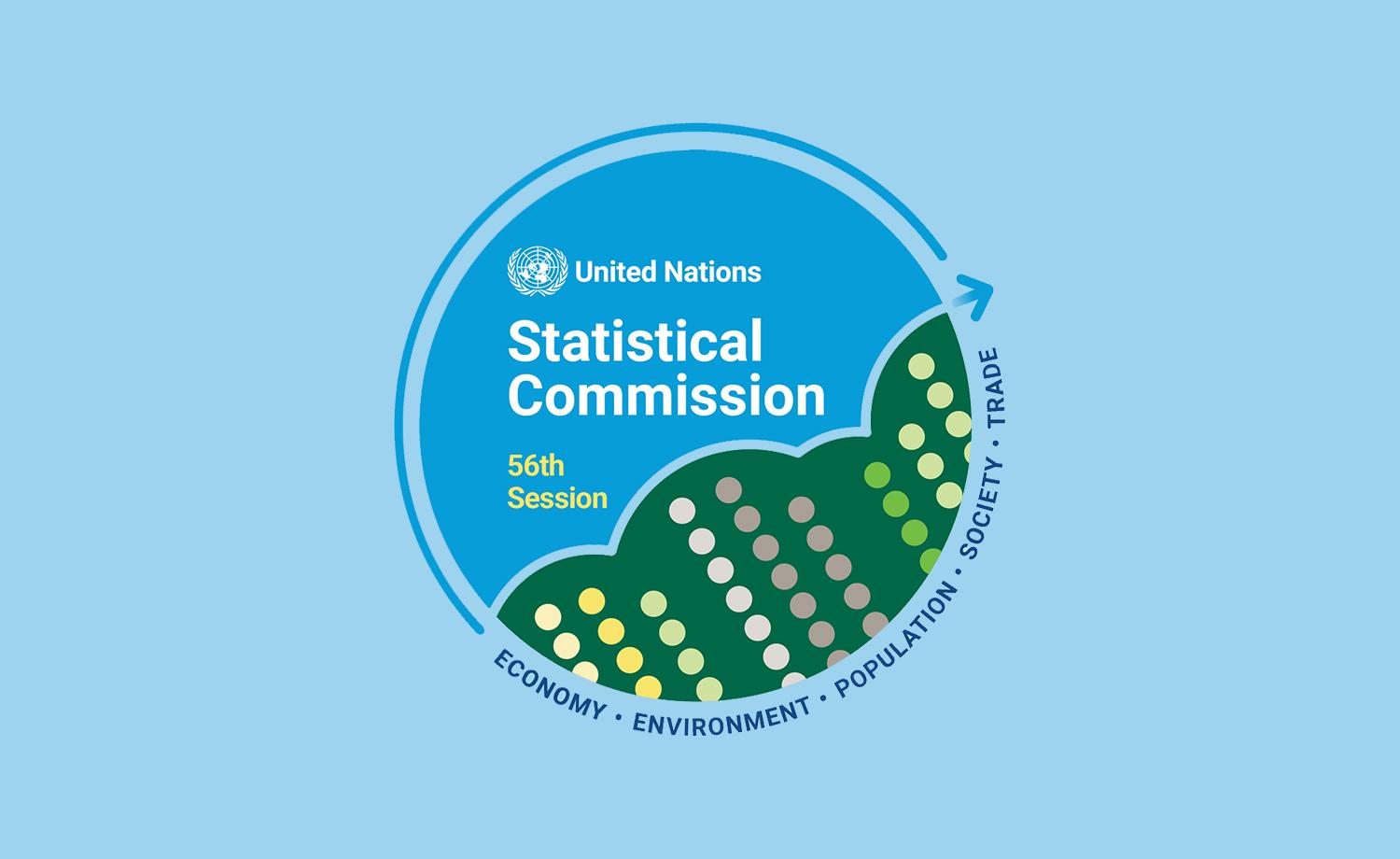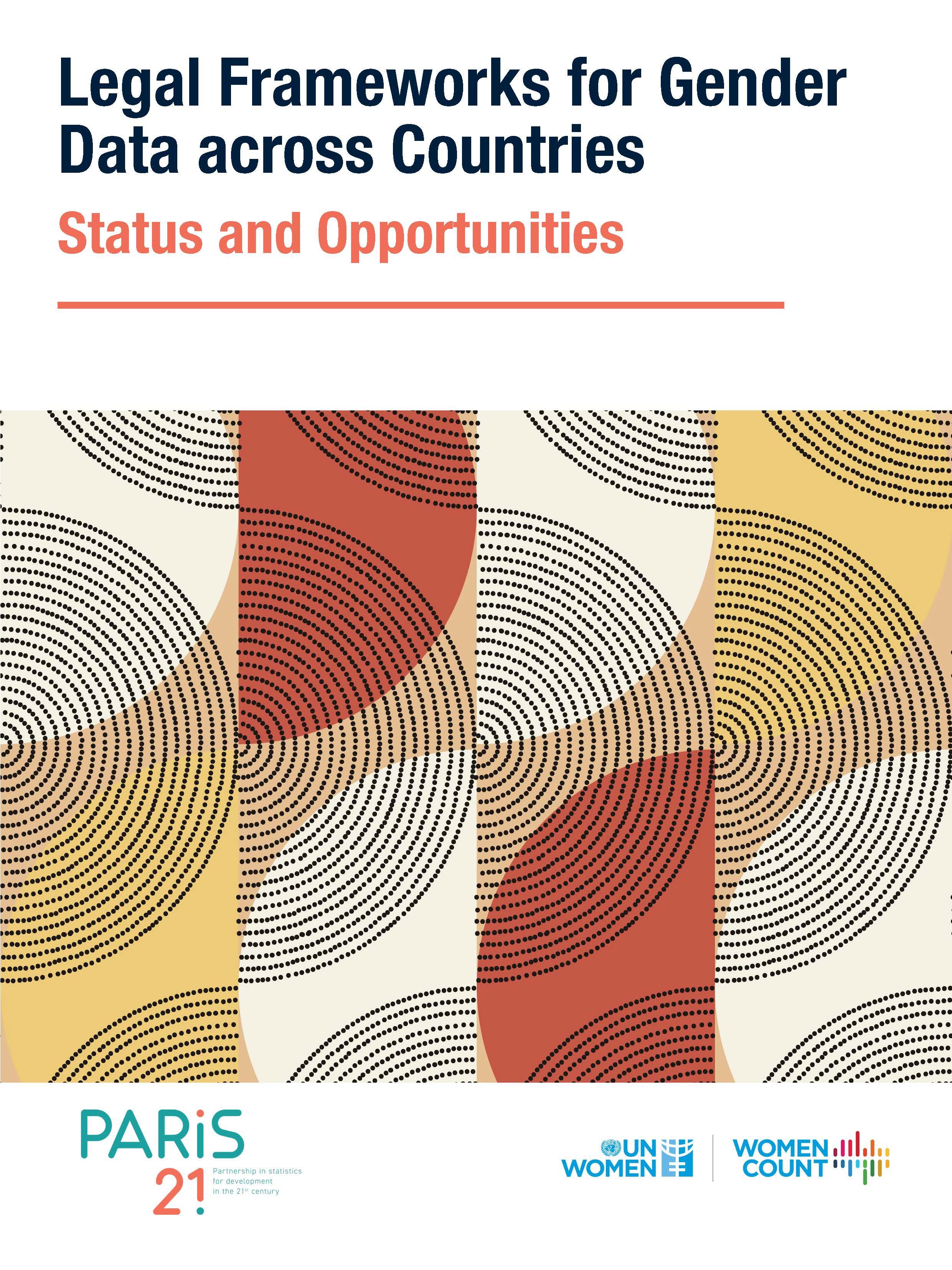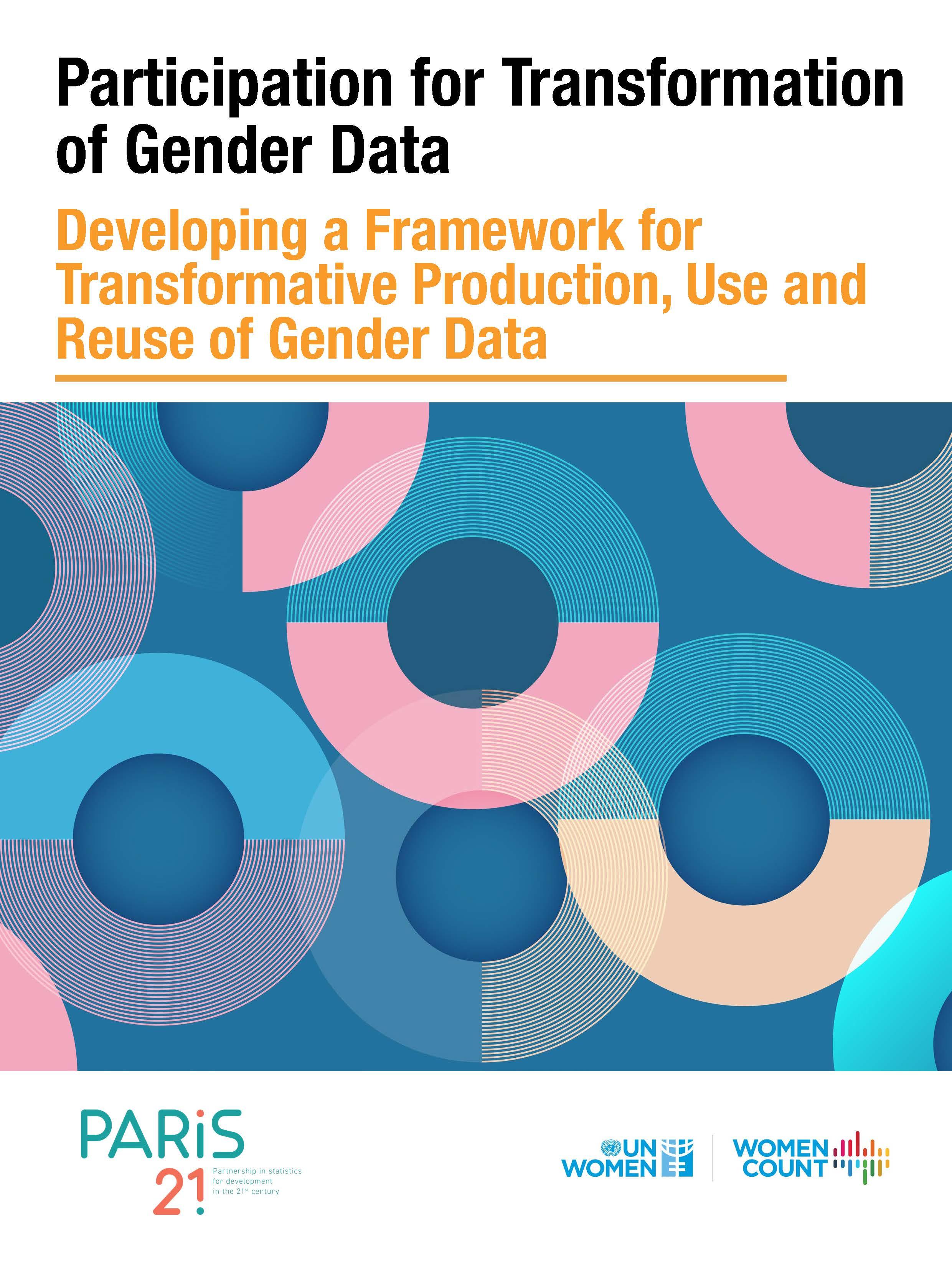Global
The Problem
At global level, challenges for gender statistics relate to:
- Limited funding for gender data production and use.
- Lack of internationally accepted standards in areas of importance for gender equality.
- Lack of guidance on integrating gender in national statistical strategies and business processes.
- Low levels of technical capacity and data literacy that prevent the use of gender data in international reporting, including to international treaty bodies and other mechanisms.
- Lack of coordination at the global level, particularly by development partners that provide technical and financial support for statistical capacity-building.
The Women Count Response Includes
- developing guidance to integrate gender statistics in national statistical development strategies (in collaboration with PARIS21)
- providing guidance to UN Women’s national and regional offices to develop and implement Women Count projects
- advocating for increased funding for the production and use of gender data.
The Problem
Due to resource and technical constraints in most developing countries, the production of gender statistics is still limited and gender data gaps are pervasive. This is particularly true in areas that are sensitive or where the technical and financial requirements are significant (e.g. violence against women and time-use surveys) and in new or emerging areas where substantial methodological work is needed.
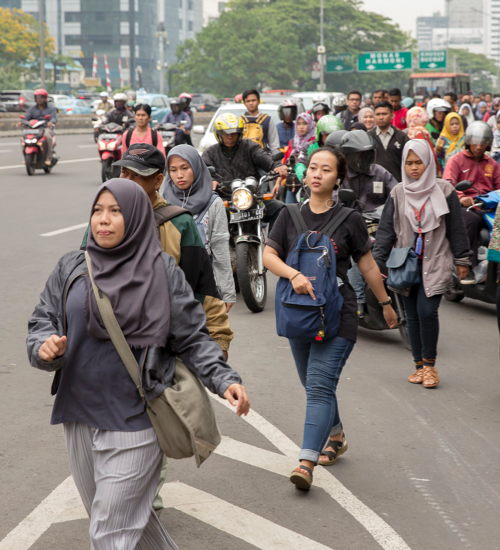
The Women Count Response Includes
- Developing guidance to integrate gender statistics in national strategies for the development of statistics (in collaboration with PARIS21).
- Providing operational, programmatic and technical guidance to UN Women’s national and regional offices to develop and implement Women Count projects.
- Advocating for increased funding for the production and use of gender data.

The Problem
Gaps in gender statistics are compounded by the low dissemination and communication capabilities of national statistical systems to make existing data available in user-friendly formats. Failure to build the capacity of policymakers and other stakeholders to use these data to inform evidence-based advocacy in decision-making exacerbates this problem.
The Women Count Response Includes
- Developing a gender data portal to serve as a unique entry-point for all things related to gender equality and the SDGs.
- Producing statistical briefs and brochures on gender statistics in various thematic areas.
- Organizing and/or participating in panel discussions on gender statistics for decision-making during major global and regional events.

